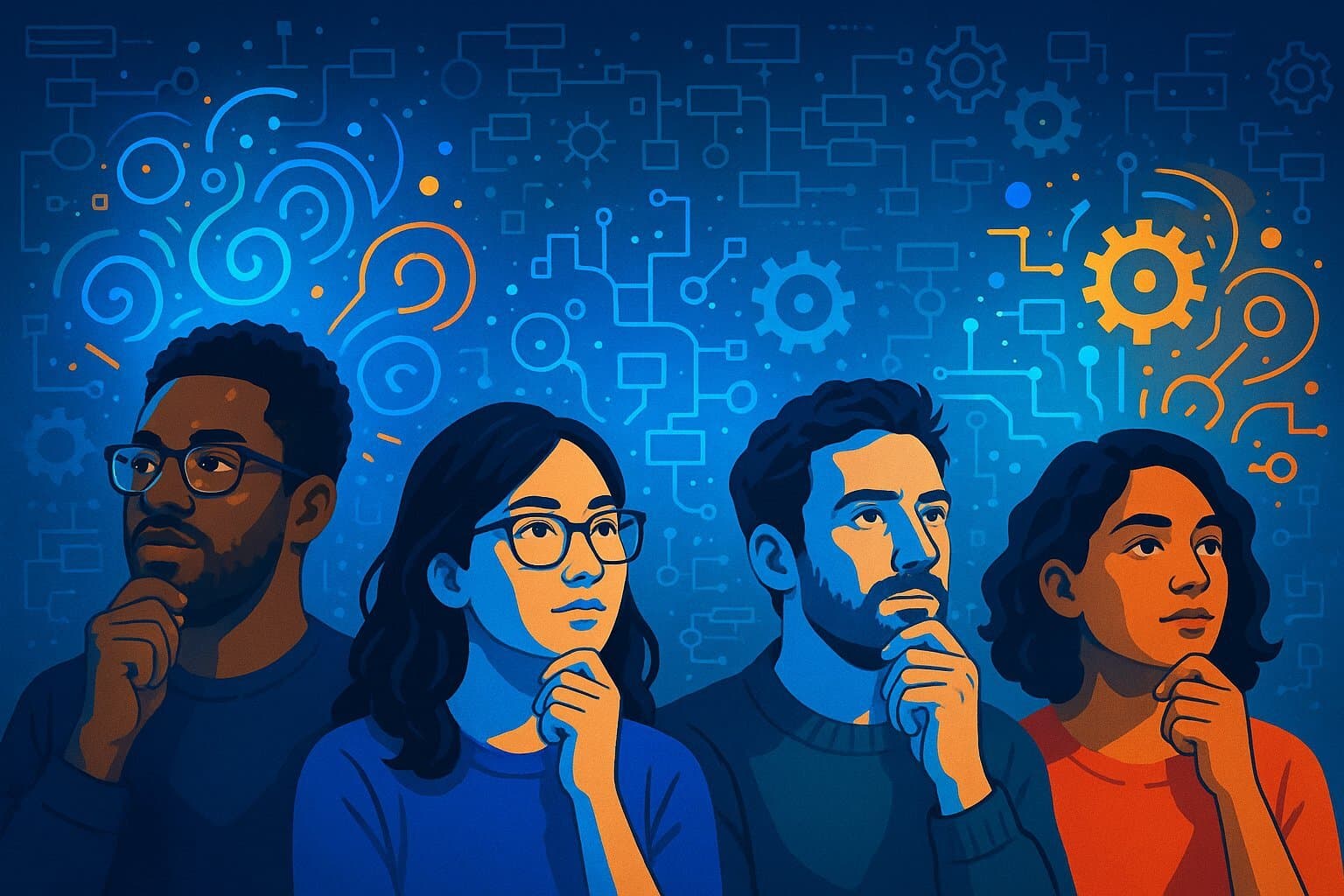
Rethinking Developer Productivity: From Typing to Thinking
October 11, 2025 / Bryan ReynoldsBeyond the Keyboard: Why Great Software is Built by Thinkers, Not Typists
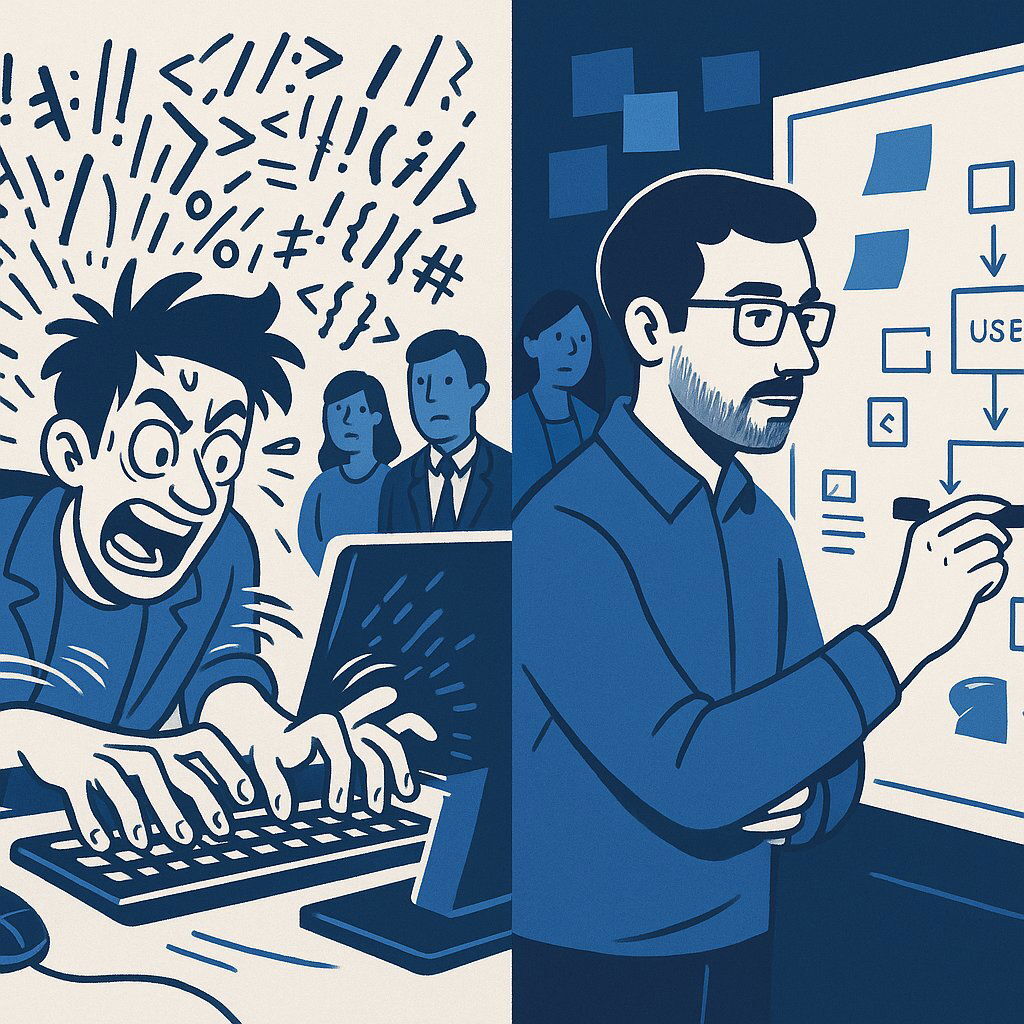
The Myth of the Ten-Thousand-Line-a-Day Coder
There's a pervasive myth in the business world about software development. It’s the image of the developer as a hyper-caffeinated typist, hunched over a glowing screen, churning out thousands of lines of code per hour. In this narrative, productivity is measured by the furious clatter of keys. Value is created when fingers are flying. A developer staring quietly at a whiteboard? That’s downtime.
This mental model is not just wrong; it’s destructive. It sets unrealistic expectations, creates friction between technical and non-technical teams, and fundamentally misunderstands where the magic of software creation truly happens.
The central thesis of this article is simple but revolutionary for many: software development is primarily a discipline of creative problem-solving and logical design, not of typing. The code itself is merely the final, tangible artifact of a much deeper, more complex intellectual process. As industry sage John Johnson famously advised, “First, solve the problem. Then, write the code”. This isn't just a clever saying; it's the foundational principle that separates exceptional engineering from mediocre output.
Think of it this way: a novelist’s most important work isn’t the physical act of typing words onto a page; it’s the painstaking process of outlining the plot, developing characters, and structuring the narrative. The manuscript is the result, not the work itself. Similarly, a software developer’s value lies in their ability to deconstruct a complex business challenge, architect a logical solution, and foresee potential edge cases before a single line of code is written. Programming, as video game pioneer John Romero puts it, is "logic-based creativity". It’s an act of invention, not manufacturing.
Industry thinkers have started to push back against the factory-floor metaphor that has long dominated project management. Software isn't "built" like a bridge or a car, following a predictable blueprint. It's "invented". Every time a developer writes code for a new business problem, they are charting a course to "a unique solution that has never been created before". If the solution already existed, they would simply copy and paste it. This creative, exploratory nature means the most critical work often looks like anything but work. It’s the quiet contemplation, the vigorous debate over system architecture, the diagramming of logic flows. The value is created in the silence between the keystrokes. Leaders who pressure their teams to "just start coding" are inadvertently sabotaging the most crucial phase of development, demanding the artifact without allowing for the art.
The Anatomy of a Developer's Day: What the Data Really Says
If the core of development is thinking, not typing, then that reality should be reflected in how engineers spend their time. The data is overwhelming and conclusive: the vast majority of a developer’s day is consumed by activities other than writing new code. For leaders and managers, internalizing this data is the first step toward building a more effective and realistic partnership with their technical teams.
A groundbreaking report from Software.com, analyzing data from over 250,000 developers, delivered a shocking headline statistic: developers spend a median of just 52 minutes per day actively writing or editing code. This isn't an anomaly; it's a consistent finding across numerous studies. An IDC survey found that developers spend more time on operational and background tasks than they do on coding , and research from Microsoft has long confirmed that developers spend surprisingly little time on their main coding tasks.
So, if they aren't furiously typing out new features, what are they actually doing? The data paints a clear picture of a day spent wrestling with complexity, collaborating with others, and navigating systemic friction.
To make this clear, we've synthesized data from multiple industry reports into a single view of the modern developer's time portfolio.
The Modern Developer's Time Portfolio: Beyond Writing Code
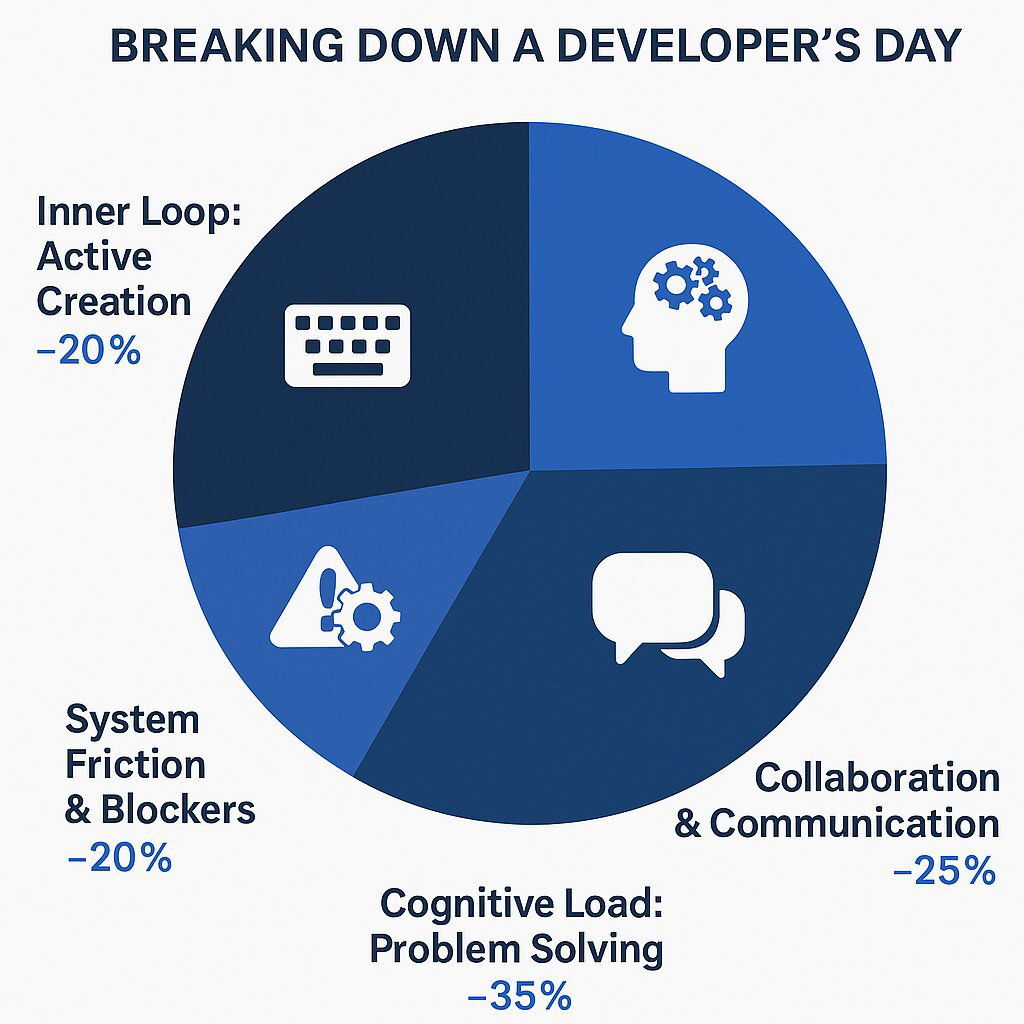
| Activity Category | Average Time Allocation (%) | Key Activities Included |
|---|---|---|
| Inner Loop: Active Creation | ~15-25% | Writing new code, building new features, unit testing. |
| Cognitive Load: Problem Solving | ~30-40% | Debugging, reading existing code, research, system design, architectural planning. |
| Collaboration & Communication | ~20-30% | Meetings, code reviews, internal messaging, requirements clarification, stakeholder syncs. |
| System Friction & Blockers | ~15-25% | Dealing with infrastructure issues, waiting on approvals, insufficient documentation, technical debt. |
This table shatters the myth of the developer-as-typist. The smallest slice of the pie is "Active Creation." The bulk of their time is spent in the cerebral, collaborative, and often frustrating work that surrounds the code.
The reasons for this are deeply systemic. According to a 2024 report from Cortex, 58% of organizations say their developers lose at least 5 hours per week to unproductive work, with the most common range being 5-15 hours per developer per week . Another report from Atlassian found that a staggering 69% of developers lose 8 or more hours weekly to such inefficiencies.
The culprits are not lazy developers; they are organizational hurdles:
- Technical Debt (59%): The single biggest inefficiency is the "tax" of past shortcuts—poorly designed code that makes every new feature harder to build. Explore how excessive software flexibility can drive technical debt and hidden complexity.
- Insufficient Documentation (41%): When information isn't written down, developers are forced into a time-consuming treasure hunt, trying to understand how complex systems work. Stack Overflow's 2024 survey found that 61% of developers spend more than 30 minutes a day just searching for answers or solutions.
- Waiting and Blockers: The Cortex report identified "time spent gathering project context" and "time spent waiting on approvals" as the top productivity leaks, each cited by 26% of leaders.
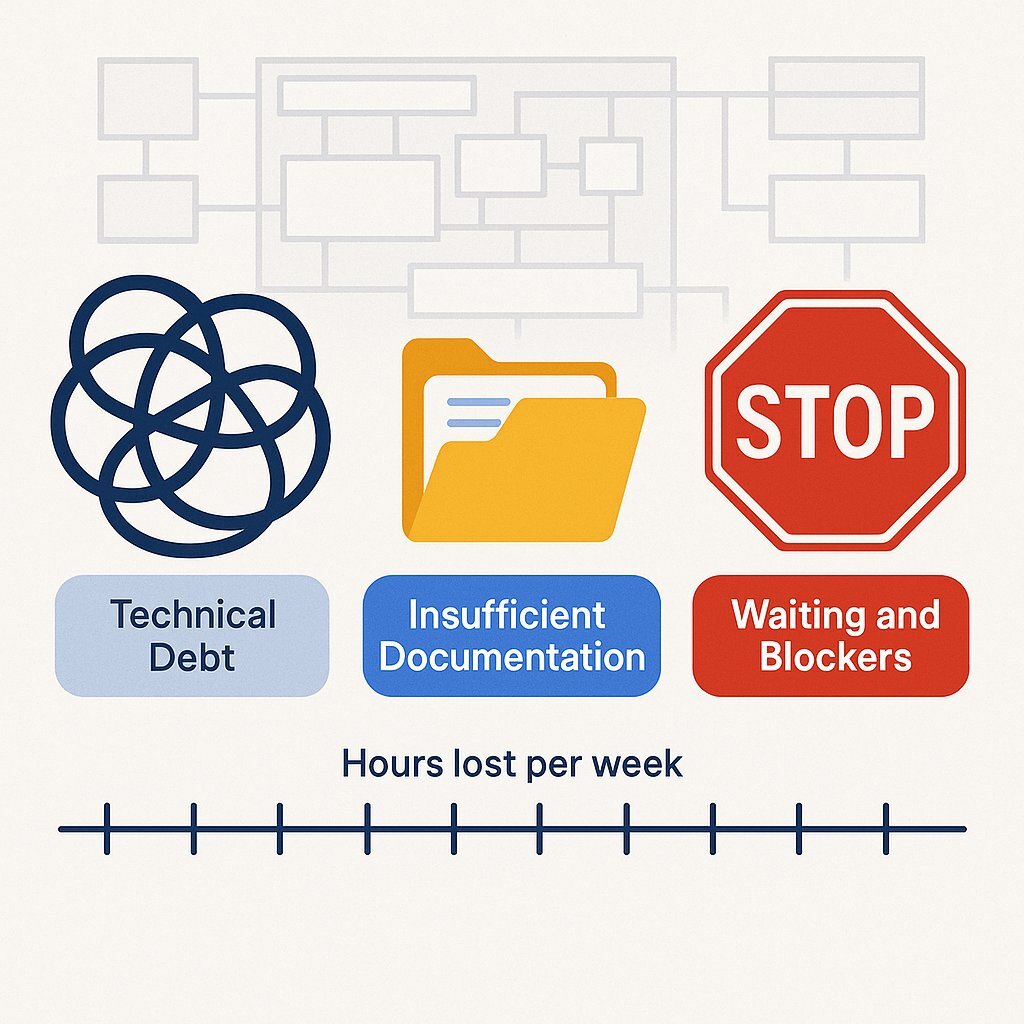
This data reveals a critical disconnect in the industry. Improving developer productivity is a top business priority, with leaders rating its importance at an average of 8.2 out of 10. Yet, the primary obstacles are not individual but systemic. A manager who pushes a developer to "code faster" without addressing the crippling technical debt, the sparse documentation, or the bureaucratic approval processes is like a coach yelling at a swimmer to go faster while simultaneously tying weights to their ankles. The most effective leaders understand that their job is not to manage the developer, but to manage the
developer's environment . The path to true productivity lies in removing systemic friction, not in cracking a whip over the keyboard.
The Architect and the Artisan: Redefining the Developer's Role
Given that the data dismantles the "code monkey" stereotype, we need a new, more accurate metaphor. The best way to understand a great software engineer is as a hybrid: part architect and part artisan .
The architect is the systems thinker. They analyze the business problem, design the logical blueprint, and plan how different parts of the system will interact. They are obsessed with the conceptual integrity of the project, ensuring it's built on a solid foundation. The artisan is the master craftsperson. They take that blueprint and bring it to life with clean, efficient, and maintainable code. They know their tools "like an artist knows their paintbrushes" and take pride in the elegance of their work.
This redefinition has profound implications for how organizations should hire, manage, and value their engineering talent. It shifts the focus from raw technical knowledge to a more holistic set of problem-solving capabilities.
Hiring for Thinkers, Not Dictionaries
When you view development as problem-solving, your entire approach to hiring changes. The goal of a technical interview should not be to see if a candidate has memorized a specific algorithm. The real purpose is to "assess how the candidate arrived at the right solution". The process reveals more than the answer.
- Look for Questions, Not Just Answers: A strong problem-solver doesn't jump to a solution. They start by asking clarifying questions to fully understand the problem's context and constraints. They collaborate with the interviewer, treating them as a stakeholder.
- Prioritize Foundational Skills: Qualities like critical thinking, communication, collaboration, and a willingness to learn are far more valuable than expertise in a specific programming language that might be obsolete in a few years.
- The Data Backs It Up: A study by the firm AgileEngine found that candidates who scored highly on general problem-solving skills were up to three times more likely to pass the entire interview process and be accepted by clients.
This leads to a more resilient hiring strategy. Instead of hiring for a static position of knowledge (e.g., "we need a React developer"), you hire for a steep learning trajectory . You're betting on an individual's ability to adapt and solve the problems of tomorrow, regardless of the technology stack.
Fostering a Culture of Creative Problem-Solving
Once you have a team of thinkers, you must create an environment where they can thrive. This means moving away from a "feature factory" model and toward an "outcome-driven" approach. Instead of handing developers a rigid list of features to build, leaders should present them with business problems to solve. This fosters ownership, autonomy, and creativity.
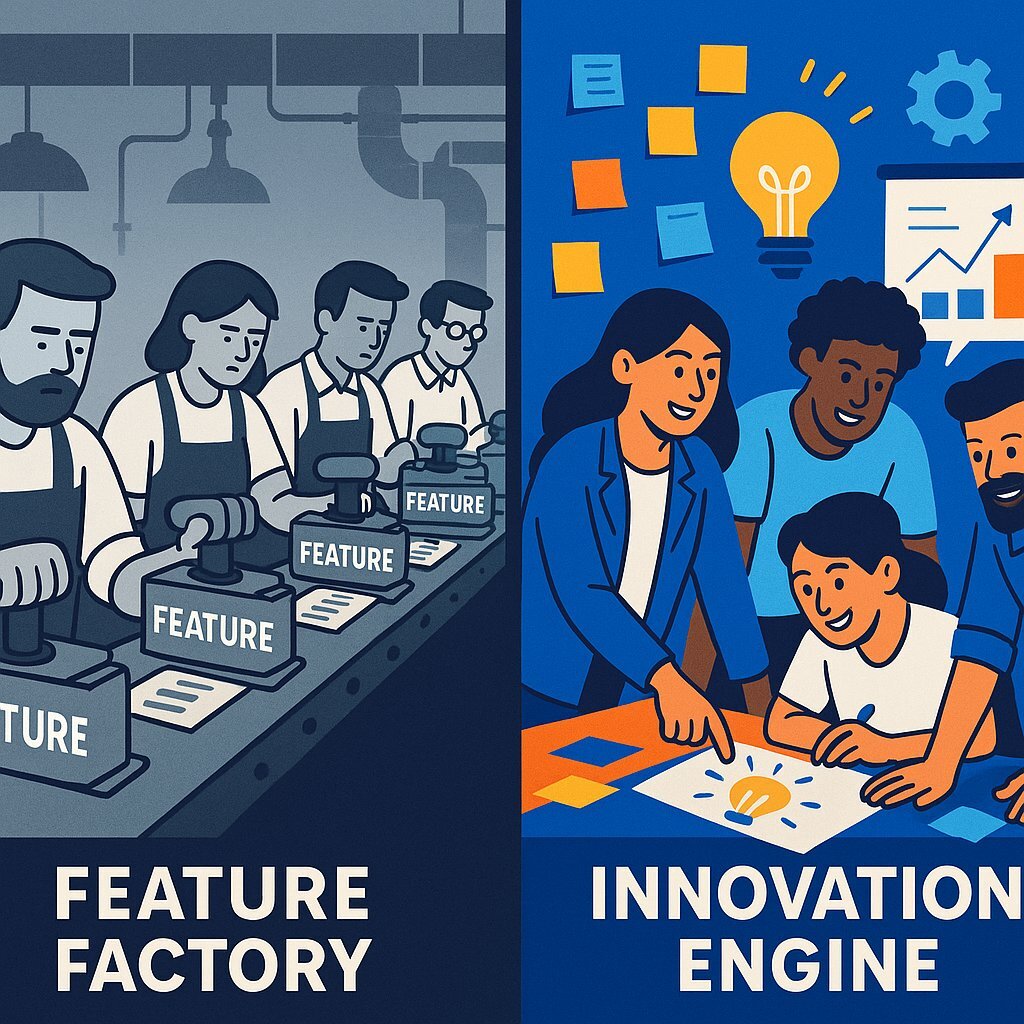
The actual work of software problem-solving is an iterative process of discovery. It involves:
- Pattern Recognition: Experienced developers recognize that while each problem is unique, it often shares patterns with problems that have been solved before.
- Decomposition: Breaking a large, complex problem down into smaller, more manageable pieces.
- Hypothesis and Experimentation: Forming a hypothesis about a potential solution, implementing a small version of it (a prototype), and testing it to see if it works as expected.
This is a creative process that requires curiosity and the courage to break established patterns. It is the opposite of a predictable, assembly-line task. By redefining the developer's role as an architect and artisan, organizations can begin to build teams that don't just write code, but create real, lasting value.
How This Mindset Shift Revolutionizes Project Outcomes
Adopting the view of software development as a creative problem-solving discipline isn't just a philosophical exercise; it has a direct and dramatic impact on project success, budget adherence, and stakeholder satisfaction. For non-technical leaders, this mindset shift is the key to unlocking the true potential of their engineering investments. It changes how projects are planned, how teams collaborate, and how success is measured.
Embracing Agility as a Natural Consequence
Traditional, rigid project management methodologies like Waterfall are built on a manufacturing metaphor. They assume that all requirements can be known and perfected upfront, followed by a long, linear "construction" phase. This approach is fundamentally incompatible with a process of invention and discovery. When the solution is unknown at the outset, a predictive plan is doomed to fail.
This is why Agile methodologies emerged. At their core, Agile frameworks are designed to be adaptive rather than predictive . They acknowledge the inherent uncertainty in software development and provide a structure for navigating it.
- Iterative Development: Projects are broken down into small, iterative cycles (often called sprints). At the end of each cycle, the team delivers a small piece of working software. This allows for constant feedback and course correction, ensuring the final product aligns with evolving business needs.
- Welcoming Change: The Agile Manifesto explicitly states, "Welcome changing requirements, even late in development". This isn't a sign of poor planning; it's a sign of learning. As stakeholders see the product evolve, they gain a better understanding of what they truly need. An adaptive process harnesses this learning for a competitive advantage.
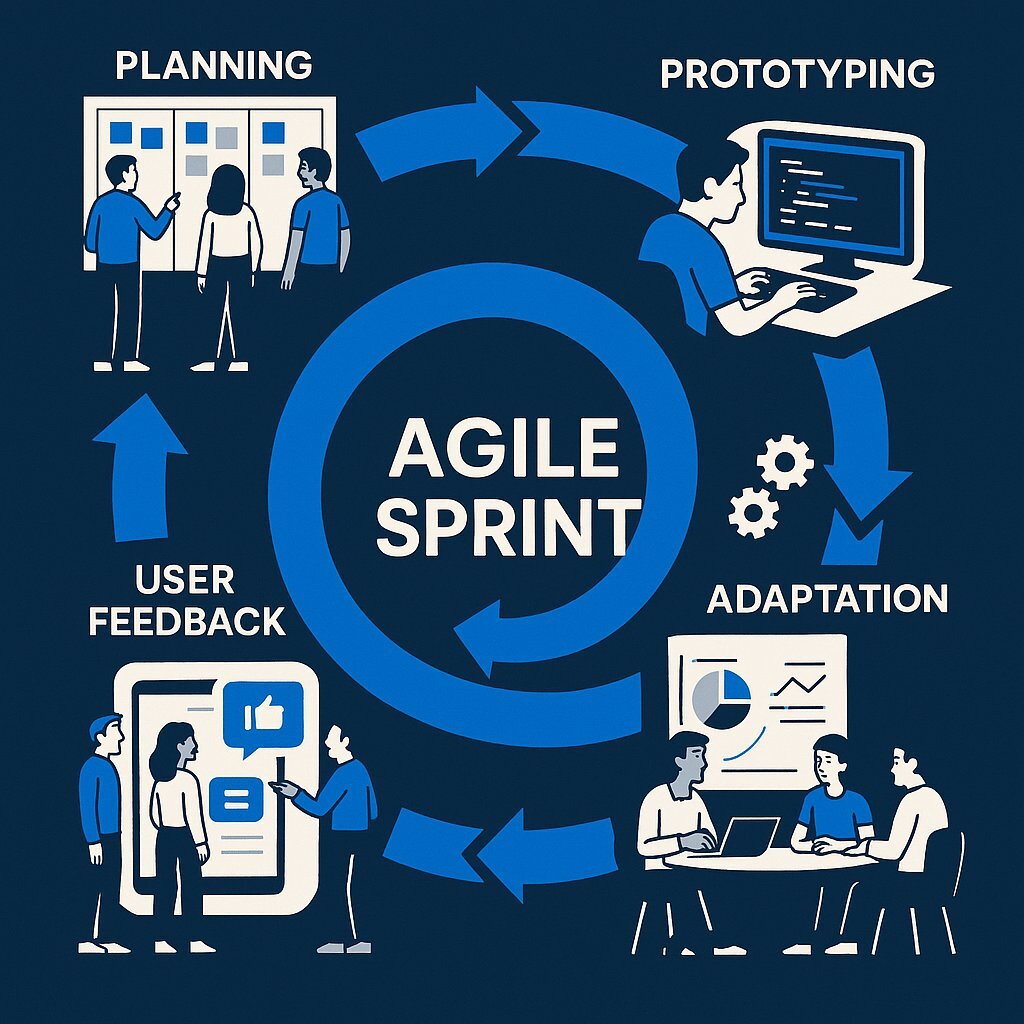
At Baytech Consulting, our Rapid Agile Deployment model is the embodiment of this philosophy. It’s a framework for collaborative discovery, ensuring transparency and adaptability in a world where business needs are constantly in flux.
Avoiding the "Mythical Man-Month" Trap
One of the most timeless and critical lessons for any manager comes from Fred Brooks's seminal book, The Mythical Man-Month . His central thesis, now known as Brooks's Law, is simple: "Adding manpower to a late software project makes it later" .
This seems counterintuitive in a manufacturing context—if you're behind on building cars, adding more workers to the assembly line helps. But it makes perfect sense when you see development as a complex cognitive task. Brooks identified two key reasons why the "man-month" is a myth:
- Tasks are not perfectly partitionable: Many development tasks are sequential. You can't have nine women produce a baby in one month. Similarly, some parts of a system must be designed before others can be built upon them.
- Communication Overhead: As you add more people to a team, the number of communication channels explodes according to the formula n(n−1)/2. A team of 5 has 10 channels; a team of 10 has 45. The time spent onboarding new members and keeping everyone in sync quickly outweighs the added labor.
A leader who understands that development is problem-solving will resist the knee-jerk reaction to throw more bodies at a delay. Instead, they will ask their technical lead, "What is the biggest blocker, and how can I help you remove it?"
From Order-Taker to Strategic Partner
The most profound change occurs in the relationship between business leaders and their development teams. When developers are seen as typists, they are treated as order-takers. They are handed a list of features (the "what") and expected to implement it without question.
When they are seen as problem-solvers, they become strategic partners. A wise leader provides them with the business context and the user need (the "why"). For example, instead of saying "Build a CSV export button," a leader should say, "Our sales team needs an efficient way to get customer data into their spreadsheets for custom analysis."
This simple shift is transformative. The development team, with its deep technical knowledge, might determine that a CSV export is a clumsy solution. Perhaps a direct API integration, an automated email report, or a more powerful in-app analytics dashboard would solve the underlying problem far more effectively. By providing the "why," leaders unlock the team's full creative potential, transforming them from a feature factory into an innovation engine. A great manager's role is to act as this crucial bridge, translating business needs into technical context and shielding the team from the distractions that prevent deep, focused work.
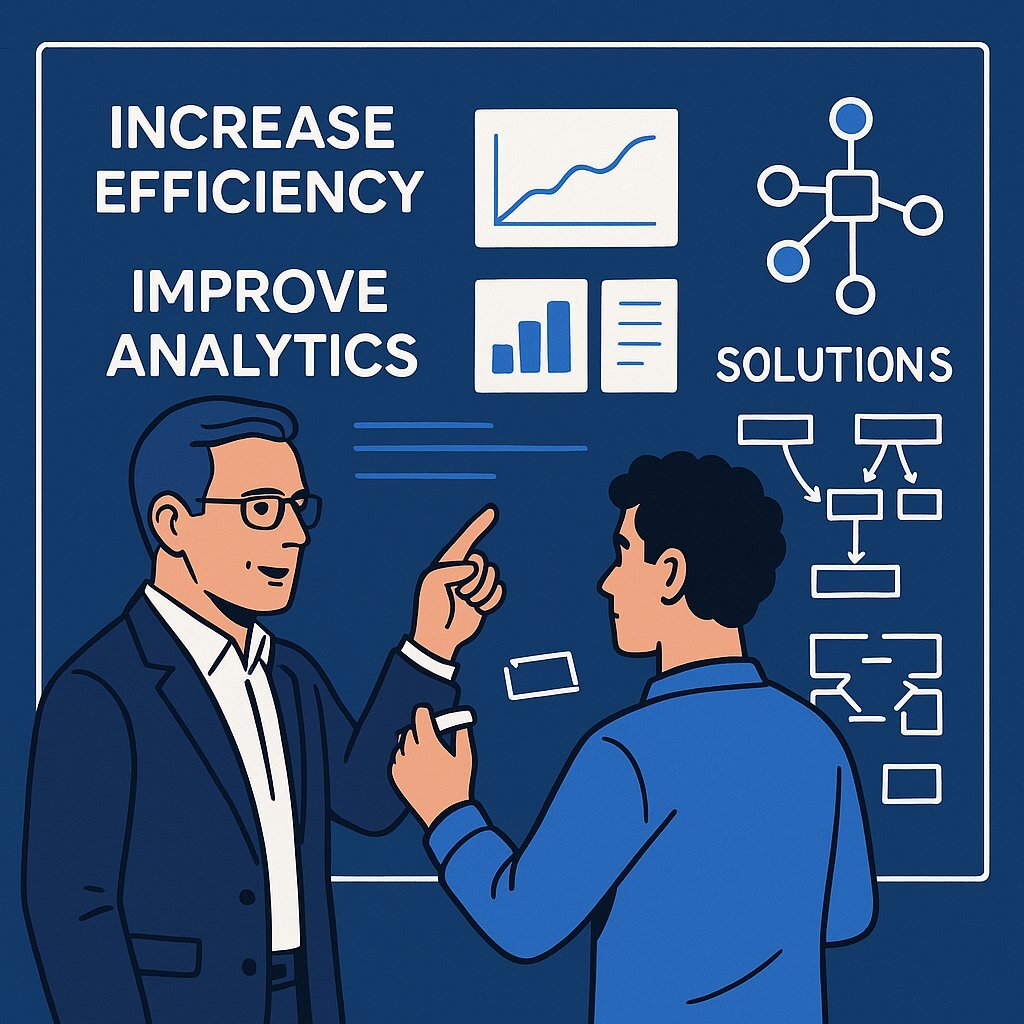
Cultivating Problem-Solvers: The Baytech Consulting Philosophy in Practice
Understanding that software development is a problem-solving discipline is one thing; building an entire organization around that principle is another. At Baytech Consulting, this philosophy isn't just a talking point—it's embedded in our culture, our processes, and our client engagements. Our core differentiators are the natural, practical outcomes of this foundational belief.
Our "Tailored Tech Advantage" is a direct rejection of the one-size-fits-all, cookie-cutter approach. We recognize that every business faces a unique set of challenges and operates within a unique context. Therefore, every solution must be custom-crafted. Our commitment to using a cutting-edge tech stack—including platforms like Kubernetes, Docker, and Harvester HCI—isn't about chasing trends. It's about leveraging modern tools that provide the flexibility, scalability, and robustness required to solve today's increasingly complex business problems. We choose the right tool for the job, not the most familiar one, because the problem dictates the solution.
Similarly, our "Rapid Agile Deployment" methodology is more than just a workflow; it's a framework for collaborative discovery. We understand that for any non-trivial project, the path to the best solution is fraught with uncertainty. Our agile process is designed to navigate that uncertainty in partnership with our clients. Through iterative cycles, transparent communication, and continuous feedback, we treat every project as a journey of shared learning. This adaptive approach allows us to pivot as requirements are refined and new insights emerge, ensuring the final product doesn't just meet the initial specification but solves the real, underlying business need.
This entire system is powered by our people. When we say we hire "highly skilled engineers," we are defining "skill" by the standards laid out in this article. We aggressively screen for the traits of an architect and an artisan: critical thinking, intellectual curiosity, clear communication, and a passion for solving complex puzzles. Technical proficiency in a given language is a prerequisite, but it's the ability to deconstruct a problem and articulate a logical solution that truly defines a Baytech engineer. Our reputation for efficiency and on-time delivery is a direct result of a team that spends more time thinking upfront to write less, but better, code later.
Ultimately, a company's development process is a mirror reflecting its core philosophy. A rigid, document-heavy, waterfall process reflects a belief in development as a predictable manufacturing line. It assumes all problems can be perfectly understood and specified in advance—a dangerous assumption in a dynamic business environment. In contrast, an adaptive, agile process like ours reflects a deep understanding of development as a creative, unpredictable, and collaborative problem-solving endeavor. When a client chooses a development partner, they are not just buying a service; they are aligning with a philosophy. Our process is built for the reality of modern business, designed to invent the tailored solutions that drive a true competitive advantage.
Conclusion: Your Blueprint for Unlocking True Engineering Value
Shifting the collective mindset from viewing software development as typing to seeing it as thinking is the single most impactful change an organization can make to improve its technology outcomes. It reframes the developer from a cost-center cog to a value-creating partner. It replaces friction and missed expectations with collaboration and innovation. This new perspective provides a clear blueprint for action.
Here are the next steps for each key stakeholder:
For Aspiring Developers
- Deconstruct Problems, Don't Just Memorize Syntax: Focus your learning on the process of breaking down a challenge into logical steps. A deep understanding of how to approach an unknown problem is far more valuable than memorizing the syntax of a dozen frameworks.
- Read More Code Than You Write: The fastest way to become a great developer is to read great code. Contribute to open-source projects to learn how complex, real-world systems are built. Understanding existing code is a harder and more critical skill than writing new code from a blank slate.
- Articulate Your Thought Process: In interviews and on the job, practice explaining how you are solving a problem. The clarity of your thinking and your ability to communicate it is often more important than the speed at which you arrive at the final answer.
For Engineering Managers
- Redesign Your Hiring Process: Move away from trivia and "gotcha" algorithm questions. Instead, use open-ended system design challenges and real-world problem-solving scenarios that test for critical thinking, communication, and collaboration.
- Measure Outcomes, Not Outputs: Abandon vanity metrics like lines of code or story points. Focus on what truly matters: system uptime, bug reduction rates, user satisfaction, and the team's progress on paying down technical debt.
- Become a Friction-Remover: Your most important job is to create an environment for deep work. Aggressively defend your team's focus time. Champion investments in better documentation, streamlined CI/CD pipelines, and automated testing—the systemic fixes that truly boost productivity, like those described in the importance of the software discovery phase.
For Non-Technical Business Leaders
- Present Problems, Not Prescriptions: Bring your technical leaders into strategic conversations early. Instead of handing them a feature list, present them with the business challenges and opportunities you're facing. Trust them to architect the best technical solution—this collaborative approach is key to unlocking real business agility and value.
- Reframe "Change" as "Learning": In an agile project, a change in requirements is not a failure of planning; it's a success in learning. The project plan is a map of your current understanding, not a rigid set of turn-by-turn directions. The path will and should change as you learn more about the terrain.
- Internalize Brooks's Law: Burn the phrase "just add more developers" from your vocabulary. When a project is delayed, the right question is never "Who can we add?" but "What can we remove?"—be it a technical blocker, a bureaucratic process, or a scope ambiguity. Modern software budgeting frameworks offer more options than just scaling headcount.
Building great software is one of the most powerful levers for business growth in the modern economy. By embracing the reality of development as a creative, problem-solving discipline, you can transform your technology function from a source of frustration into your greatest competitive advantage.
If your next initiative demands more than just code—if it requires a true thought partner dedicated to solving your unique business challenges—we should talk.
Further Reading
- https://en.wikipedia.org/wiki/The_Mythical_Man-Month
- https://www.martinfowler.com/articles/newMethodology.html
- https://www.joelonsoftware.com/2000/04/06/things-you-should-never-do-part-i/
About Baytech
At Baytech Consulting, we specialize in guiding businesses through this process, helping you build scalable, efficient, and high-performing software that evolves with your needs. Our MVP first approach helps our clients minimize upfront costs and maximize ROI. Ready to take the next step in your software development journey? Contact us today to learn how we can help you achieve your goals with a phased development approach.
About the Author
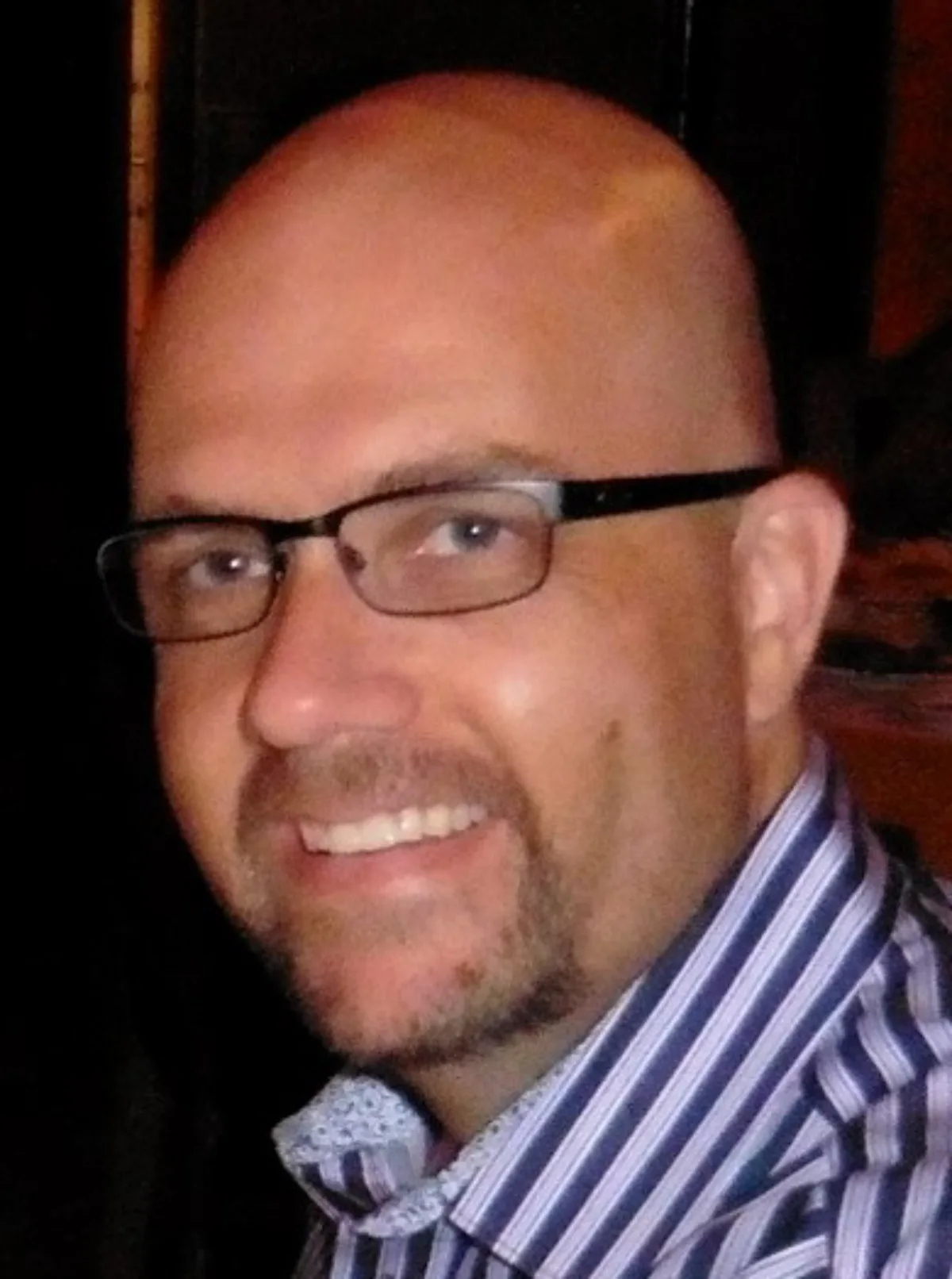
Bryan Reynolds is an accomplished technology executive with more than 25 years of experience leading innovation in the software industry. As the CEO and founder of Baytech Consulting, he has built a reputation for delivering custom software solutions that help businesses streamline operations, enhance customer experiences, and drive growth.
Bryan’s expertise spans custom software development, cloud infrastructure, artificial intelligence, and strategic business consulting, making him a trusted advisor and thought leader across a wide range of industries.


